Table of Contents
Abstract
Last meeting we discussed what tools you need in your home Tools for your home. So this talk will begin as a continuation of the previous talk. But!!!
I am going to start to introduce some wood working tools in this talk. I like to do wood working as a hobby and especially like making things for my home.
Other Useful, but not needed Hand Tools
Chisels
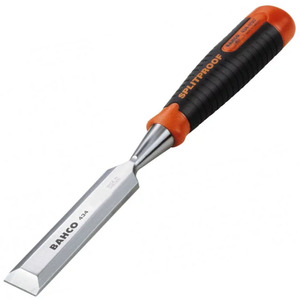
You might ask why would you need a chisel? The answer is if you are trying to replace a door knob. Sometimes a new catch needs to be set deeper into the door. A chisel allows you to deepen the cut out.
Wood Files, and Rasp

A wood file is useful to reduce the size of a door or drawer that sticks. The rasp end removes the wood more quickly but leaves the surface rough.
Sand Paper
Sand paper is good for both wood and sanding wall spackel. When you cover up the seams in dry wall, you will need sandpaper to smooth the surface before painting.
Sanding Block
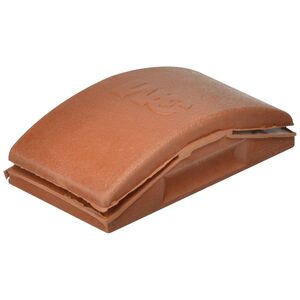
This sanding block is hard rubber and you wrap the sand pager around the block. I find this shape easy to use. You can also just wrap the sand paper around a block of wood.
Level
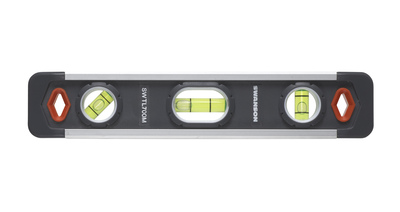
A small level like this is easy to use around the house. Levels come in many sizes, but this size works well for pictures, appliances, or even construction projects.
Stud Finder
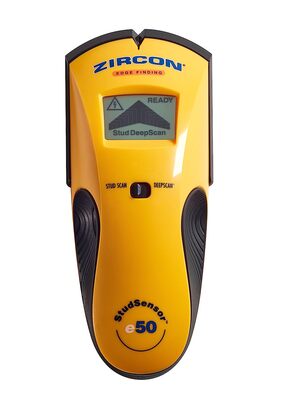
This tools allows you to locate the studs in a wall. You will need to find studs anytime you are hanging something heavy on a wall.
Staple Gun
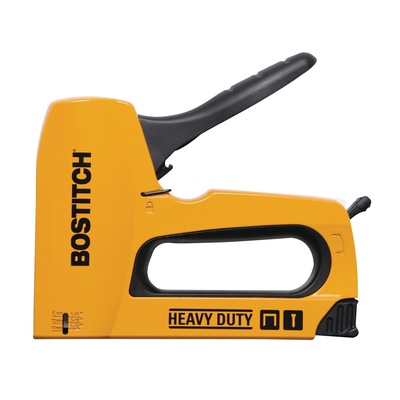
The staple gun is useful for attaching plastic to a frame, or wires to a board. I use a special foot for my staple gun to hold wires in the middle of a staple when running low voltage wires.
Pry Bar
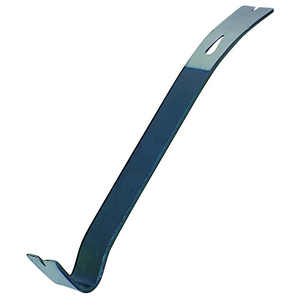
A pry bar is good for pulling nails. It can also help you lift a heavy object off the floor.
Saw Horses
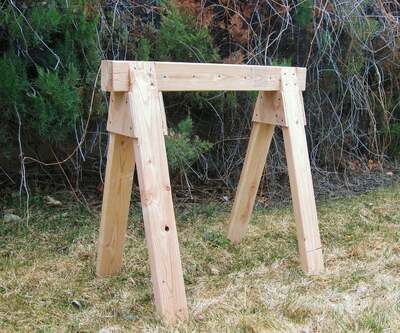
These saw horses are often used in pairs. They can support boards to make a work table, They are good for holding boards needing cutting. You can buy them ready made, or make your own.
Work Bench
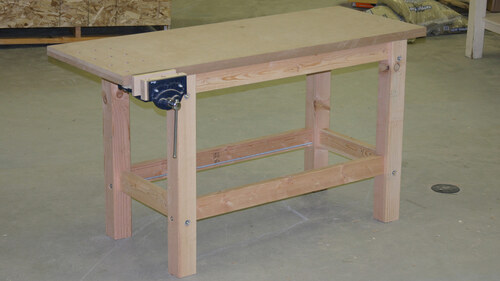
The workbench is a solid surface to work on. They come in many sizes and types. You can purchase them or make them yourself. Where ever you put the table, be sure you can walk around it and it has good lighting.
Step Ladder
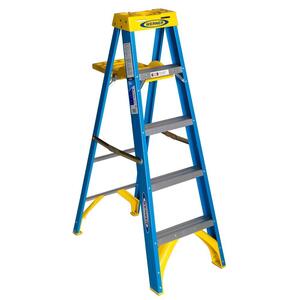
I find a small step ladder very handy. You want something easy to carry which has a shelf for tools.
Tool Belt
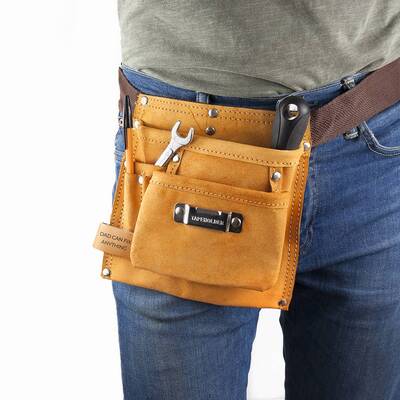
A tool belt is especially handy when you are working on a ladder. Having the tools on your belt saves you from leaving them around, or dropping them.
Clamps
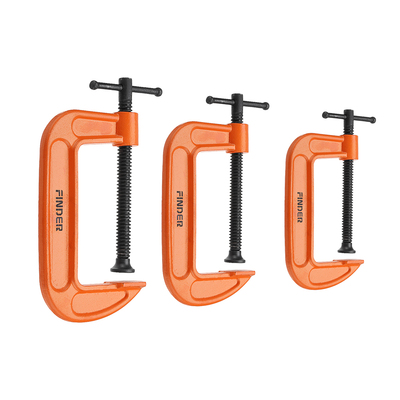
Clamps can be used to hold pieces together when glue is drying. They can hold a part in place while you screw it down. They can even be used to support a bar in a doorway for hanging cloths.
Tin Snips
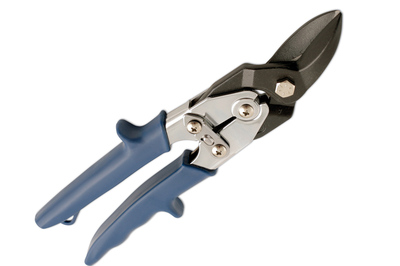
These are also known as metal shears. They can cut light metal sheets, tin cans, light aluminum sheets, etc. They are good for cutting materials too heavy for regular scissors.
Caulking Gun
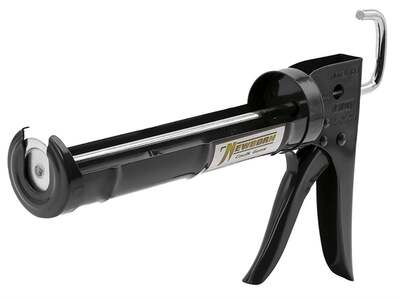
This tool allows you to apply sealant around sinks, showers, and windows. This tool takes a tube and pushes the plunger to release the caulk.
Multi Meter

This tool helps you test things from batteries to wall outlets. Using the voltage settings you can check for live wires, or correct wiring. Using the resistance settings can check switches, motors, or contacts. By adding an amp clamp you can check the amount of power a circuit or appliance uses.
Power Tools
Once you start to get serious about repairing and building things around the house you are going to want to move from hand tools to power tools.
I am going to discuss general purpose tools that would be most useful for the handyman / home owner to have. Which ones you buy is up to you. I will give a few choices depending on your uses and needs.
Extension Cords

Extension cords come in many varieties from 2 conduction light duty 18 gauge to 4 conductor 10 gauge for generators. The ones I use are 3 conductor medium duty, or 14 gauge wire. If you need a heavy duty cord go for 12 gauge, if you only need medium duty you can get 16 gauge extension cords.
The gauge refers to the amount of amps it can carry. 18 gauge is only good for 10 amps and 15 feet. Where 12 gauge is good for 20 amps at 50 feet. The longer the length the higher the gauge you need. The smaller the gauge number the more power it will carry.
Drill
The drill is a good tool for many tasks above and beyond simple holes.
Corded Electric Drill
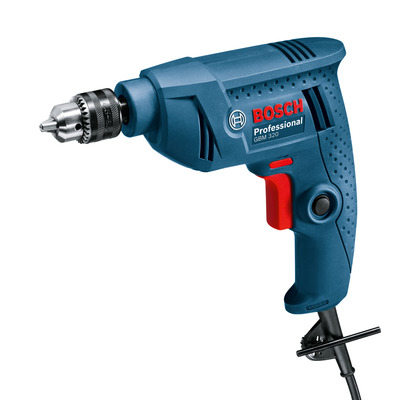
This is your standard hand drill. It can be used for drilling holes. It can also use a wire brush to clean rusty tools. These are variable speed and reversing type. They typically come in 1/4 and 3/8 inch chuck.
Cordless Electric Drill
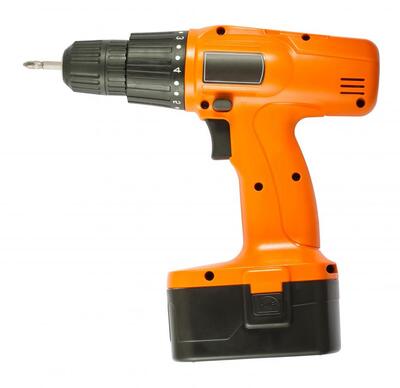
This drill uses a battery instead of a cord. They are not quite as powerful, but work well for most tasks. These drills often have two speeds. The lower speed, along with the tension setting allows you to use them on screws. In many uses this battery powered drill has replaced the corded drill.
Drill Press
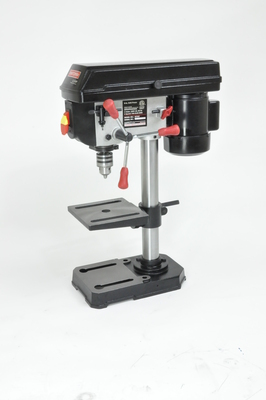
The drill press comes in table mount and flour mount. The motors are much stronger, the speed is adjusted by belts in the top. The table moves up and down to accommodate the work. A machine like this can drill steel, cut large circles, drive circular sanding drums, and even be used as a table router. The table can accommodate machine clamps to hold the work.
Saw
The saw is sort of a universal tool. We often think of a wood saw, but there are stone saws, and metal saws. For the home owner I will focus on the wood saw as the most common. But many saws that cut wood can also do metal or plastic.
I am going to list several saws in my order of usefulness.
Circular Saw
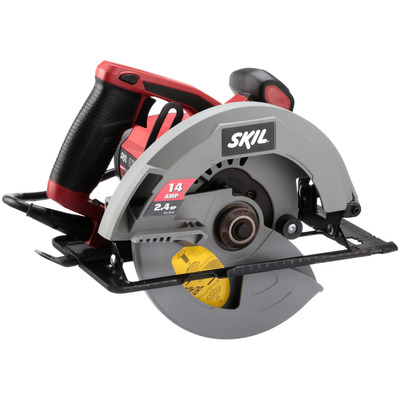
The most common power wood saw is the circular saw. Given it simplicity and usefulness in cutting. The only down side if these saws is that they can be dangerous if misused.
Jig Saw
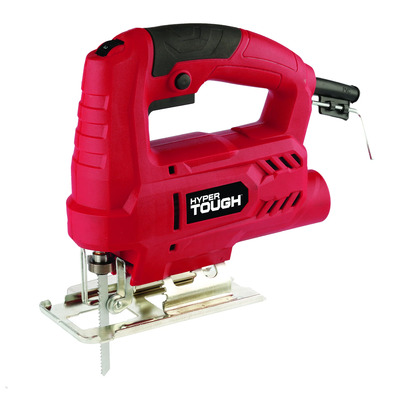
The jig saw is useful for cuts which are not in a straight line. The oscillating blade is easy to maneuver around a pattern. This saw is good for cutting things like wall board, plastic, or metal with the right bits.
Chain Saw
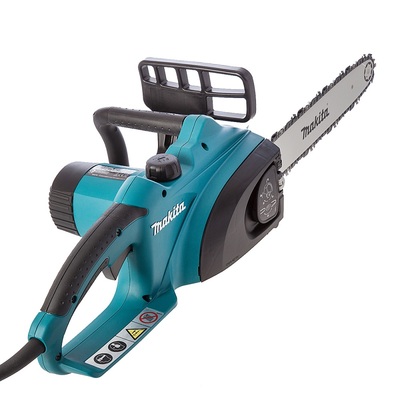
If you need to trim trees or bushes a chain saw is indispensable. The one pictured is an electric. There are gasoline, electric, and battery versions of this saw. The electric has lots of power. light weight, and long life, and it is the cheapest of the three. The battery powered are fairy new, but have good reviews, and connivance.
Sawsall Saw
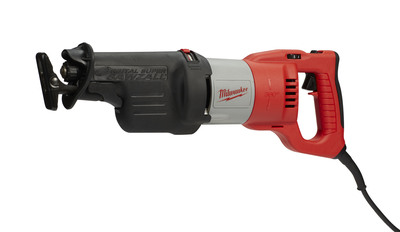
This big brother of the jig saw is often seen on construction sites. It can cut beams, wall board, pipes, rebar, just about anything with the right blade. This is definitely a specialized rough cut saw, but packs plenty of power to get the job done.
Shop Vac
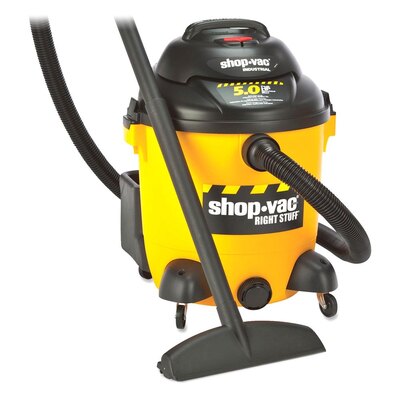
This tool is useful for more than just vacuuming up dust. These vacuums can also vacuum water. I use a long extension with my shop vac to clean the leaves out of my gutter.
Wood Working Tools
We have now looked at the tools I think work well in a home shop. Since one of my hobbies is wood working, I thought it would be fun to describe some of the tools used in wood working. Now to be honest I am not a master builder by any means, but I find working with wood both fun and useful. So here are a few of my favorite tools, that are not part of the hand tools above.
Power Tools
If you are going to do any serious work with wood you are going to need a heavy duty saw. Here are the most common saws.
Table Saw
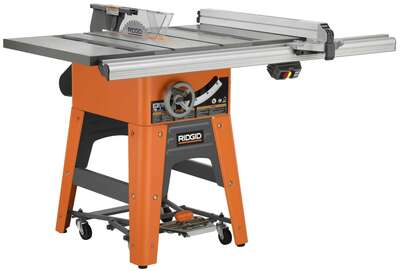
The table saw is the classic work horse for cutting in a shop. The motor is powerful and the blade is typically belt driven. The blade can be raised and lowered or tilted. The work is moved over the saw. These saws need plenty of open space but can easily cut thick wood or full sheets of plywood.
Cross Cut Saw
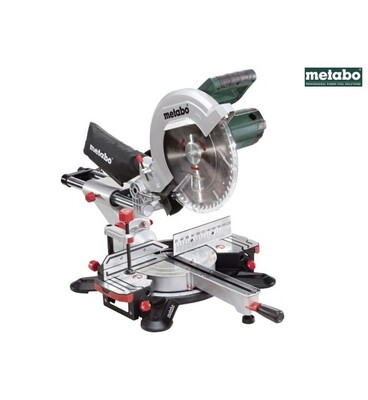
This is similar to a circular saw, but mounted on a frame so it moves across the wood. It can cut angles in two dimensions. It is not suitable for large boards or sheets of plywood.
Radial Arm Saw
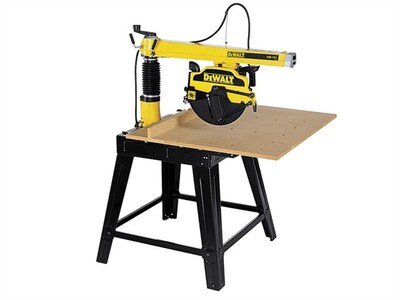
This is similar to the cross cut saw but the saw can travel further on the arm. Additionally the saw can turn parallel to the fence so you can rip sheets like a table saw. I have used a saw like this for many years for many tasks.
Band Saw
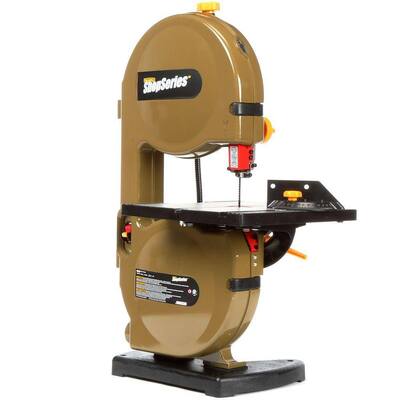
This saw is similar to the jig saw but uses a continuous toothed band and a larger motor to run the wheels. Since the saw contains a table you move the work on the table instead of the saw.
Wood Shaping Tools
This category of power tools shape or plane wood. This can be for molding, rounding corners, or cutting new patterns.
Router

The wood router is basically a motor with a collet attached. This is an extremely versatile tool for shaping wood. there are many types of bits available for different functions.
Joiner
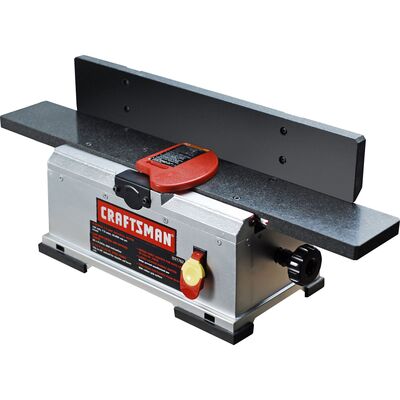
This is a somewhat specialized tool. It has a rotary blade in the base and squares and smooths the edge of the board. The blade is often 6 to 8 inches wide.
Planner
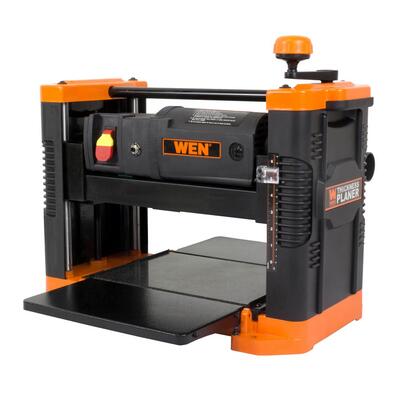
The wood planer is like a joiner as it has a set of rotating blades. The planer is used to resurface a board. It typically has a wider blade than the joiner and rollers to walk the board through the machine.
Lathe
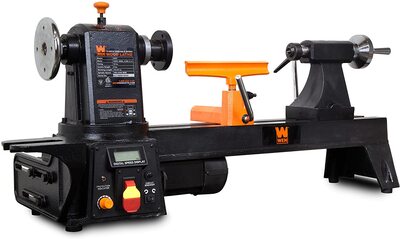
This tool spins the wood between the wood clamp and the spindle. The tool rest is used to brace the wood chisels used to cut the wood. This is typically how things like nobs, table legs, and bowls are made.
CNC machine
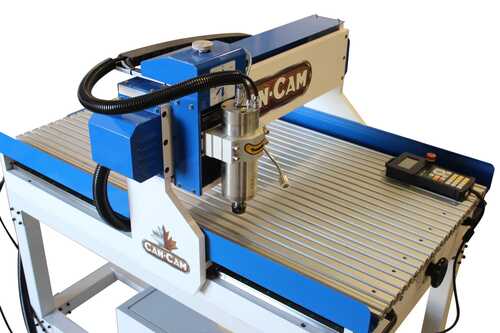
A computer numerical control (CNC) router is a computer-controlled cutting machine which typically mounts a hand-held router as a spindle which is used for cutting various materials, such as wood, composites, metals, plastics, glass, and foams. Wikipedia
The funny thing is that this type of machine preceded the computer. They were used after world war 2 to cut engine blocks and other parts using paper tapes. But with the advent of the personal computer they have moved into the hobbyist market.
Written by John F. Moore
Last Revised: Mon Jul 17 06:43:44 PM EDT 2023

This work is licensed under a Creative Commons Attribution-NonCommercial-ShareAlike 3.0 Unported License.
